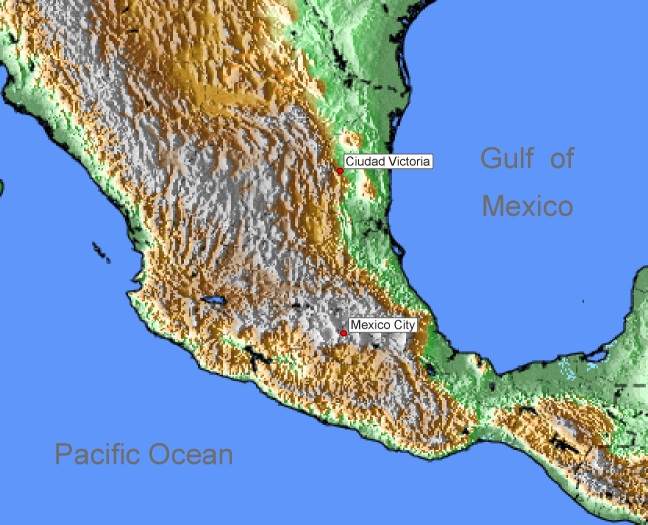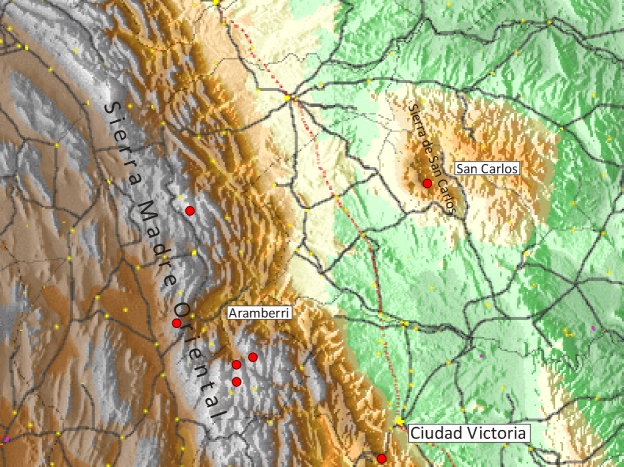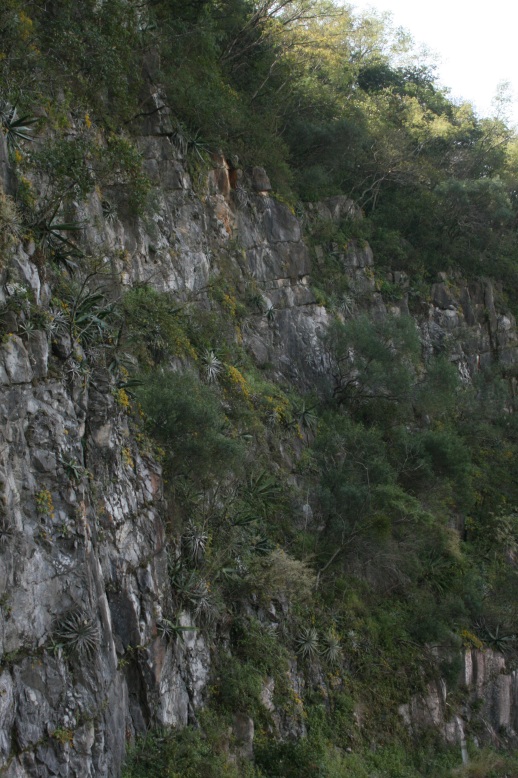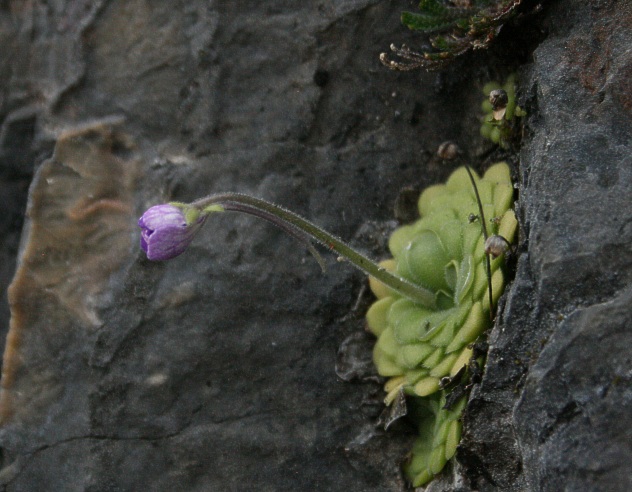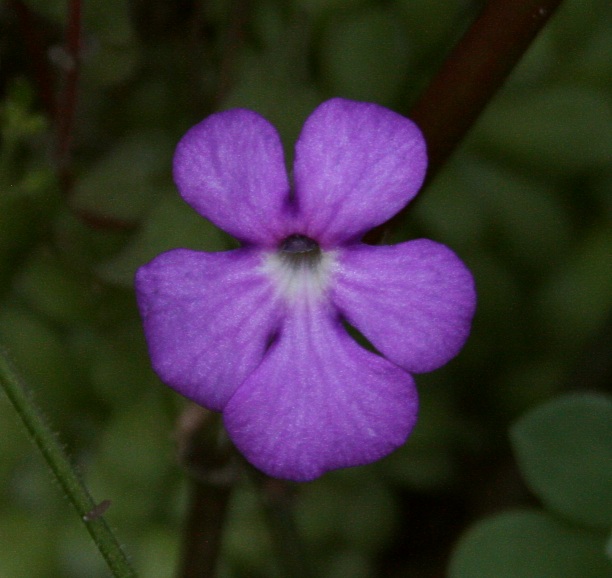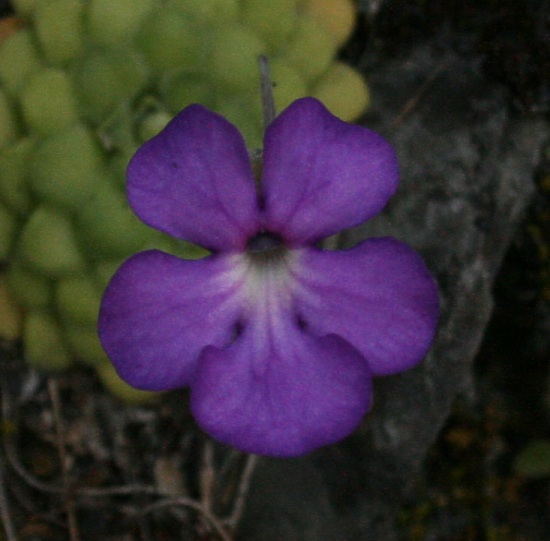
Oliver Gluch's World of Carnivorous Plants or: "What you always wanted to know about butterworts" |
| Impressum |

| Home | Origin | Prey | Species | Plant Purchase | Other Carnivorous Plants | Info about Carnivorous Plants | About me |
Pinguicula cyclosecta Casper (1963)Based
on herbarium specimen that were collected in 1948 in the mountain range
Sierra Madre Orriental in the southeastern part of the Mexican state of
Nuevo León, the German botanist S. Jost Casper described in
1963 a new species that he named Pinguicula cyclosecta.
The epithet "cyclosecta" refers to the circular
outline of
the corolla lobes. In the mean time additional locations of P.
cyclosecta
have been found in the Sierra Madre Oriental in the
states of Nuevo León and Tamaulipas as well as in the Sierra
de San Carlos, an isolated mountain range in the state of Tamaulipas.
Plants grow on vertical calcareous cliffs in pine-oak forests at
elevations between 950 and 2200 m.
P.
alpina
inhabits regions of the Northern hemisphere. It can be found
in subarctic and arctic areas from Scandinavia over Siberia
into Northern Kamchatka Peninsula, where plants grow from sea level up
to 1100 m above sea level. It inhabits also mountainous areas in Europe
(Alps,
Pyrenees, Carpathians) and in Asia (Himalayas, mountain range of
Northern China and Mongolia). In the
Himalayas specimen have been found at altitudes
of 4100 m a.s.l. Recently P. alpina was also
found in the arctic archipelago of Svalbard.
P.
alpina belongs to the temperate heterophyllous growth type.
During the cold winter months the plants overwinter
as hibernaculum. Often already in early autumn the
hibernaculum is formed. In contrast to the other temperate species the
yellow-white, fleshy, up to 5 cm long roots do not die over winter. In
springtime (depending on the altitude plants are growing) first summer
leaves are formed. The summer rosette forms only one set of summer
leaves. The summer rosette consists of 5-8 elliptic-oblong to
lanceolate-oblong leaves, that are 2,5 to 4,5 cm (sometimes 6
cm) long and having a pointed to obtuse tip. While at shady locations
the margin of the leaves is only moderately involute, at more sunny
locations the margin is strongly involute with the margins almost
touching. Leaf colour of the upper surface varies between green and
rarely red-brown), the lower side of the leaves show an
intense brown-red coloration when exposed to direct sunlight. The upper
surface is densely covered with glandular hairs.
A
continuous cultivation of P. alpina under central
European lowland conditions is only possible outside, as
in greenhouses, that are heated to stay frost free over
winter, there is a
risk that plants start producing summer leaves already in winter when
temperatures raise significantly during sunny conditions. Only specimen
originated from low altitude populations of Central Europe
(about
400-600 m
above sea level) that are adapted to more warmer growing conditions
seem to tolerate conditions of winter temperatures
that do not get lower than 5 °C during night. It is also important to
prevent any root disturbances e.g. caused by fungus infection or
insects feeding on the roots during dormancy, as then plants often die.
Cultivation of plants in organic soil, in mosses or in a
coarse limestone-peat mix has shown good results. Also the use of pure
vermiculite as substrate is possible. The roots should be watered from
above from time to time with water rich in oxygen. As P.
alpina does
not form daughter buds, the only natural way of propagation is by
seeds.
|
